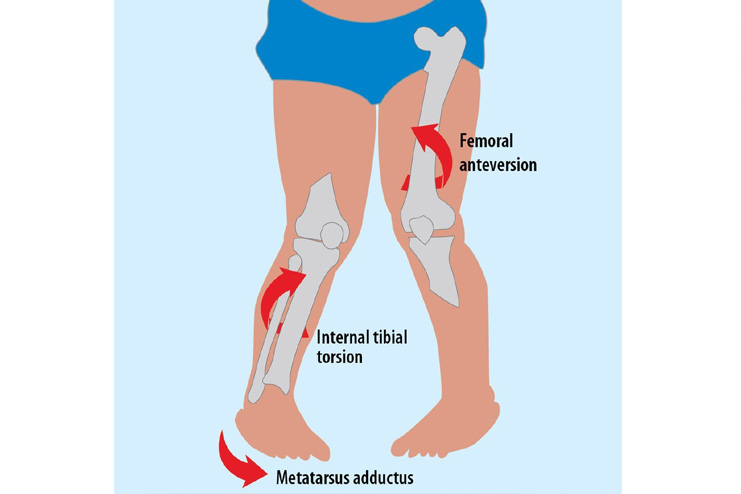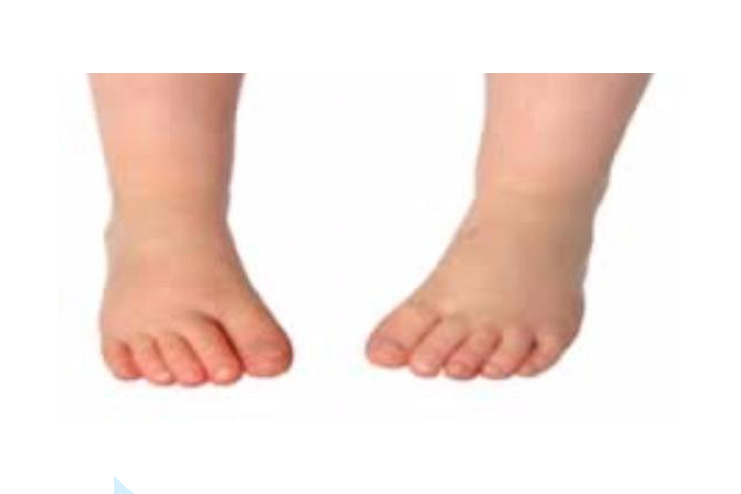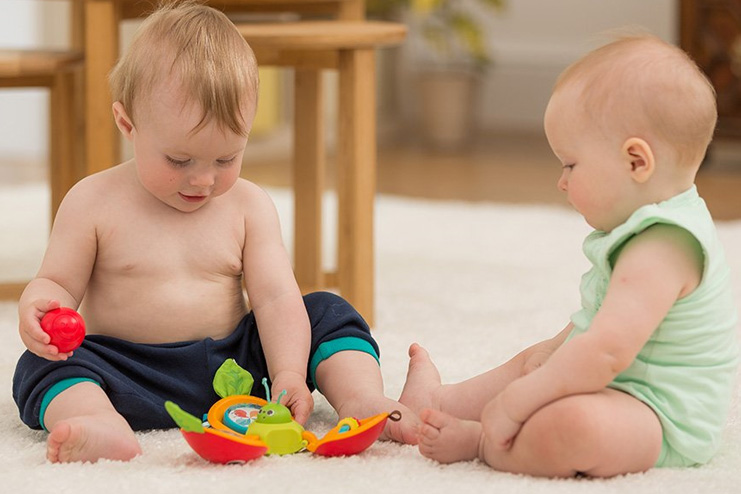You may notice your child sitting in various positions while they are playing. Most of the children will adopt the W sitting position. Let us look deep into the impacts on W-sitting position on your child’s legs.
Sitting positions help children to shift their weight from one side to another side easily. They allow your child to use back and abdominal muscles to maintain the upright sitting position. Your baby may start sitting from the age of 6 months with the little help to get into the position.
This article discusses the W sitting position in babies. It presents the side effects and the ways to stop the child from sitting in the W position.
What is W Position in Babies?
It is a position in which children sit with their knees bent, legs on the other side, feet tucked under, bottom on the floor resting between their legs. While your child is in this W-sitting position their knees may touch with each other or they may be apart. If you look at this seated position of your child from above, it resembles W.
Children of the age group between 3-6 years usually sit in this position. It can also be observed with the younger or older children.
Why Do Children W Sit?

Here are a few reasons for the W sitting position in toddlers.
1. Femoral Anteversion:
It is an inward twisting of the thigh bone. It is most commonly known as femur. This condition makes the child’s knees and feet to turn inward. It is not associated with the pain.
Teenagers and adults who have excessive Femoral Anteversion do not have any trouble in participating in sports. Very rarely some children may face severe Femoral Anteversion which does not improve as they grow. This may cause pain and prevent them from doing certain physical activities.
2. Core Weakness or Poor Balance:
W sit offers wide base. Children with abdominal and trunk extensor weakness usually sit in this position to compensate the weakness and establish support for the abdominal muscles.
3. Habit:
Children sit in this position as they are habituated to similar positions in their early stages. Crawling is one of the positions similar to W-sitting with the knees touching ground, legs on the other side and the knees positioned outside the hips.
Many other children soon recognize that this is the comfortable position and does not require much muscle activation. This makes them adopt increased reliance on W-sitting.
Effects Of W Sitting Position In Children:

Here are a few effects of sitting in W position:
1. Decreases Core Activation:
w- sitting position offers the wide base. It does not require much activation of abdominal or trunk extensors. Children sitting in this position rarely try to shift their weight from side to side. If they sit at the same position for more time, this decreases their lateral and posterior balance reactions.
2. Tibial Torsion:
It is one of the joint abnormalities. This type of abnormality causes the foot to turn outward and the knees to turn inward. It may be painful sometimes and influences the proper walking and running mechanisms in the child.
3. Back or Pelvis Pain:
w-sitting position may shorten and tight the hip and leg muscles which may cause back or pelvis pain once they grow.
4. Deformities:
It is an extremely stressful position for younger babies and may result in a wide range of muscle deformities in the future.
5. Adversely Impacts the Sitting Posture:
sitting encourages the exterior pelvis tilts and minimizes the activation of trunk extensor. Over a period of time, the weak muscles may develop poor sitting positions.
6. Decreases Trunk Rotation:
Posterior pelvic tilt limits the ability of trunk to move around. Children will probably exhibit an inability to play the games that involve the rotation of the trunk.
7. Pigeon Toe:
Decreased hip external motion and the weakness of the hip abductor may contribute to the pigeon toe pattern.
Some other children may develop this pattern when they are in womb. Limited space in the uterus makes the child turn the front part of the feet inward. In some cases, this pigeon toe grows along with the leg bones.
8. Delayed or Impaired Fine Motor Skills:
Trunk rotation plays an important role in the midline crossing. Midline crossing and bilateral coordination of moving the trunk left and right is important factors for the development of motor skills.
Children may develop delayed motor skills due to poor trunk coordination. This can affect the bilateral coordination of using both hands which is very important to perform everyday activities.
9. Stress on Joints:
This W sitting position allows the hips to have maximum contact with both the bones in the joint. If your kid spends most of the time in this position this may further increase the burden on hips and your child may experience the back pain the same as adults.
When the legs are folded backward, they may exert pressure on the knee joints and sitting in this position for the longer periods may lead to joint pains.
How To Stop a Child Sitting In W Position?

Here are a few tips to avoid W sitting position in babies:
1. Give Verbal Alerts or Cues:
Tell your child not to sit in the W position using gentle phrases. You can also adopt any other cue without hurting your baby as your main goal will always is to keep your baby in safe positions. Help your child to have alternate sitting positions.
2. Teach Your Child Alternate Sitting Positions:
Here are a few alternate sitting positions to teach your child:
a. Cross Legged:
Make your child sit in cross legged position. It is the most common and comfortable position with the legs crossed and knees apart.
b. Side Sit:
In this position, both the legs are bent and the weight is balanced on a single hip. This position allows both the feet out to the same side. It reduces the stress on the joints.
Ensure to make your child shift weight onto another hip after some time.
c. Long Sit:
Allow your baby to stretch out their legs in front of them. In order to keep your child sitting for the longest time in this position place a storybook on their legs.
d. Squat:
Offer games that involve squatting which is a great way to stabilize the core and overall strength.
e. Short Kneel:
For this position, children need to sit against the heels in the folded knee position. Children should have their feet tucked together under their bottom. Kneeling is a great way to strengthen the hip and core muscles.
f. Half Kneel:
For this position, children have to tuck in their foot under and stretch other legs straight forward. This position offers a gentle touch to the muscles.
g. Chair Sit:
If your child is not comfortable in the other positions allow them to sit in the low chair while playing. Allow your child in this position for a limited period in order to encourage muscle activation.
Provide your child riding toy to make your child play in the proper sitting position.
3. Move Your Child’s Leg:
If the verbal reminders do not work to prevent your baby from sitting in W position, gently move your child’s legs to the proper position.
4. Encourage Your Child To Do Exercises:
Exercises allow your child to enhance the strength of core muscles. Don’t offer complicated exercises to your child. While they are sitting allow them to move forward and backward to grab their toys.
Tips To Stop Your Child To Sitting in W-Position:
Here are a few tips to avoid W-sitting in your child:
- Gently massage your baby’s legs for the first few months during their newborn stage to prevent any muscle deformities.
- Never try to forcibly move the legs of your babysitting in the W-position.
- Allow your child to play the games in standing position. This activity helps in the physical development of your baby.
When To Seek Help For The W-Sitting In Child:
If your child frequently uses the W-sit position, you may notice the following changes in your child which require professional help:
- If your child walks with difficulty because of the damaged or stiff leg or foot.
- Exhibits weakness in the lower extremities
- You may notice your child’s feet turning inward while walking or running instead of pointing straight ahead.
Sitting enables your baby to achieve a new perspective of the environment and allows the free movement of both the hands. Make your child avoid W sitting position and help them with other sitting positions that can do good to their muscles.










































